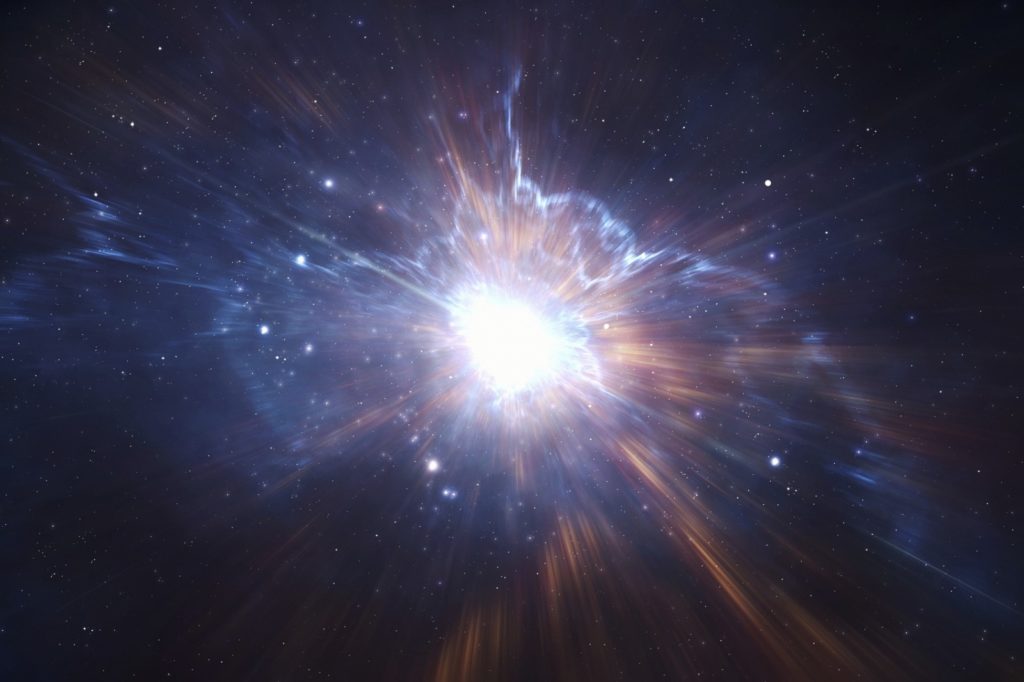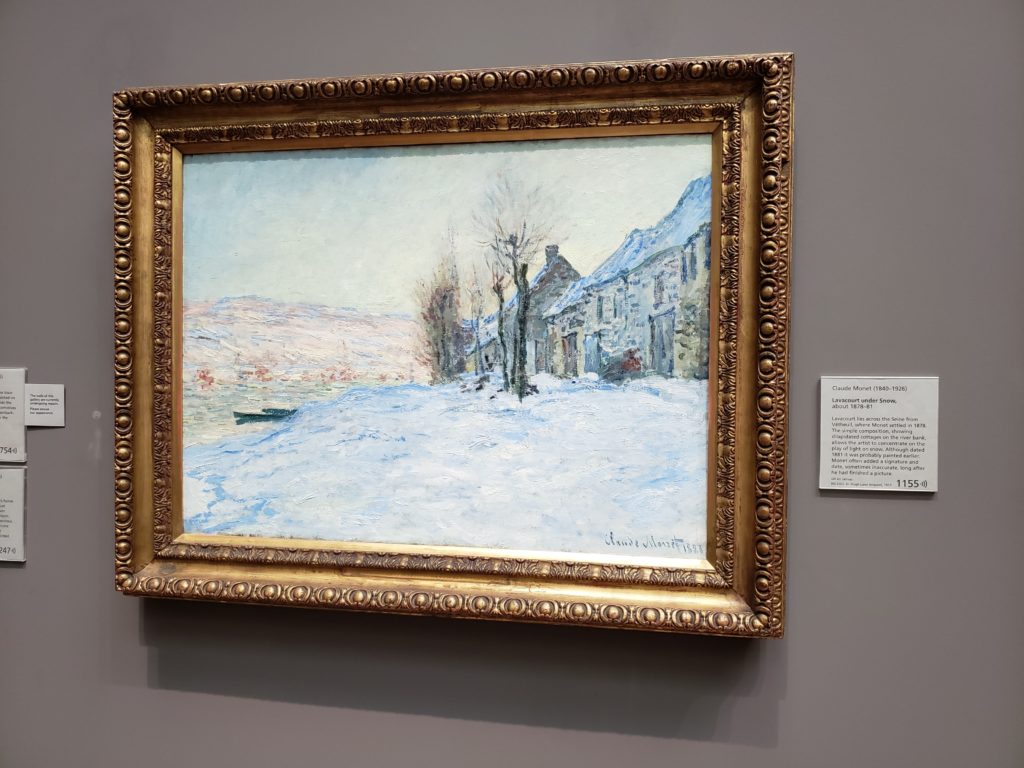In the beginning, God created the heavens and the earth. The earth was without form and void, and darkness was over the face of the deep. And the Spirit of God was hovering over the face of the waters. And God said, “Let there be light,” and there was light.
Genesis 1:1-3

One of my favorite things to do as a child was to go outside at night and look up and stare into the night sky. In middle school, I recall my dad bringing out his old childhood telescope and setting it up as we looked up at the moon and we could clearly see the craters that marked the surface, giving it the shadowed shapes that we see on the face during a full moon. Shapes that we would often imagine as a wry smile or a rabbit or any other figures that our imaginations could devise.
Still other times, we would gather outside and watch the moon change to shades of orange and red as the light reflecting off the surface would diffuse as part of a lunar eclipse. Occasionally as I would watch the night sky I would catch a glimpse of a shooting star and make a fanciful wish that I hoped would somehow make my life easier to live. At other times, I could vaguely make out the faint white haze that I would come to know was the Milky Way.
What I did not understand at this time was that the pock-marked scars on the surface of the moon were a sign of chaos. Chaos born in the darkness of space as aimless meteors would slam violently into the low-gravity surface of our nearby satellite. And there was beauty in the midst of the chaos and darkness and vast emptiness of space. And it is in this beauty of chaos that I first began to see the inklings of our Creator.
Beginning with Time
“In the beginning, God created…” (Genesis 1:1) This is the first thing that Moses wanted his readers to know. It is the pre-eminent and first message of Scripture – God is. He exists before the creation of time itself. We know time as a construct of days, months, and years. Hours, minutes, and seconds. The concept of time itself necessitates that there is a beginning, and a beginning necessitates there is a beginner. One who starts the clock. The very first thing God creates is time.
In that same instance, He creates the heavens and the earth. Space and matter. The canvas and materials with which He will construct His great masterpiece declaring the majesty of the Creator. Space – the canvas – was empty. The first brushstrokes on the canvas of existence had not yet been placed. The canvas was empty – a void. Void of substance. Void of beauty. Void of vision. The sheer reality of emptiness.
The earth was formless. The materials had not yet been shaped into a structure that the Creator would use to paint His masterpiece. The Master Potter has yet to apply the water to the clay so that it might begin to take shape and form. The water waited patiently for the Potter to dip His hands into the coolness and draw out that which was needed to soften the hard lump and begin to mold it into a figure of glory.
In the beginning of creation, there was chaos, emptiness, and darkness. Before the Potter could begin to make order out of the chaos and fill the emptiness, He must first address the issue of darkness. And the Spirit of the Creator hovered over the water preparing to dive in and make the greatest splash of all time.
Illuminating the Darkness
“hāyâ ‘ôr” – two simple Hebrew words that illuminated the darkness – “Let there be light.” Two simple words that brought forth the ability of the Creator to see His creation in vivid color. Color does not exist apart from the presence of light. Darkness in and of itself has no substance. It is in fact, the lack of the existence of light. Without light, we have no concept of color. We have no concept of visual beauty. We have no concept of vision. We have no concept of reality or truth.
As any artist will tell you today, art requires light not only so that the observer can see the masterpiece designed by the artist, but so that the artist can create with the vision that he has in his head. The more light that the artist has to work in, the greater the clarity of the picture she can paint. The greater the accuracy of the statue he can carve. The greater the detail that creator can instill into his creation.
I never fully understood or appreciated the work of Claude Monet until I saw up close and personal his painting “Lavacourt under Snow” (pictured below). Painted when he was 38 years old, over the course of 3 years, the master’s command of light and depth and texture within a painting that can easily obscure into a flush of white, pink, yellow, and light blue. With my face merely inches away from this painting I could see how the light played off the texture and created depth in the landscape scene. Once I saw this painting with new, fresh eyes in the carefully positioned light, I began to appreciate the artistry of this grand master of French Impressionism.

Filling the Emptiness
“In the beginning was the Word, and the Word was with God, and the Word was God. He was in the beginning with God. All things were made through Him and without Him was not any thing made that was made. In Him was life, and the life was the light of men.” (John 1:1-3) Our lives are often marked by chaos. Pain. Scars. Destruction. Death. It is a natural consequence of the reality of sin. Sin has made us blind to the reality of His truth. Our sin has made us live in darkness, not seeing the truth of who we are. “You were dead in the trespasses and sins in which you once walked, following the course of this world, following the prince of the power of the air, the spirit that is now at work in the sons of disobedience – among whom we all once lived in the passions of our flesh, carrying out the desires of the body and the mind, and were by nature children of wrath, like the rest of mankind.” (Ephesians 2:1-3)
But God in His infinite love and desire to create and recreate begins the process of creation and recreation with the illuminating Word. “The light shines in the darkness, and the darkness has not overcome it….And the Word became flesh and dwelt among us, and we have seen his glory, glory as of the only Son from the Father, full of grace and truth.” (John 1:5, 14)
Without light, there is no life. There is only darkness and chaos. No vision. No direction. Only the emptiness of space. And the first thing the Creator does is fill the emptiness of space with the light of revelation announcing the Creator is. It is then, and only then, that His creation will begin to see all that He has made and declare His glory as His creation.
Ordering the Chaos
If you’ve ever wandered through the halls of any museum worth its salt, you will be filled with wonder at the creations of the many artists whose works are on display before you. The Mona Lisa declares the genius of Leonardo da Vinci. The great Florentine statue of David declares the skill and beauty of the artistry with Michelangelo Buonarotti. Within the halls of the Vatican Museums, the great fresco of the School of Athens declares the majesty of Raphael. The majestic Duomo of Santa Maria del Fiore declares the ingenuity of Filippo Brunelleschi. Art says more about the artist than it does about the art itself.
In the same way, all of Creation declares the majesty of the Divine Artist that is Yahweh Adonai – the Lord God. And you are His greatest creation. It isn’t until He creates His crowning achievement in His own image that He takes take to rest from His work. It isn’t until He breathes the breath of life into the nostril of mankind that He says “it is very good.” God creates that which He loves. He blesses that which He creates.
He illuminates the darkness. He fills the emptiness. He brings order to chaos. He brings life from dead earth. And He is worth of all glory and majesty more so than the great Renaissance masters of old. He is the original artist driving away the shadows and giving you the vision to see all that He has created so that you might see all that He is.